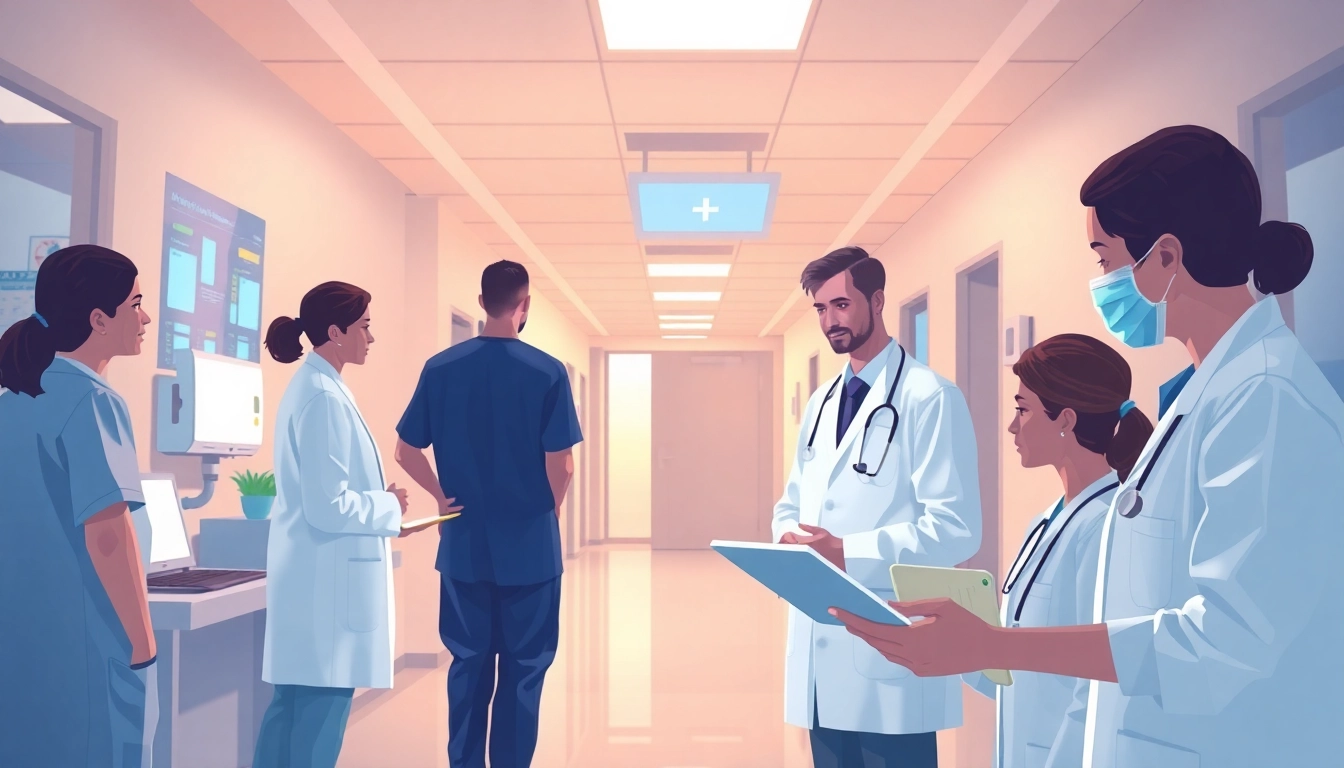Understanding Health Informatics
Health informatics is a rapidly evolving field that merges healthcare, information technology, and data management to improve patient care outcomes. The integration of technology in healthcare has transformed how practitioners interact with and manage patient information, leading to better decision-making, reduced errors, and enhanced efficiency. For a deeper understanding of how this plays out in practical scenarios, one can explore resources available at https://www.informaticsview.com.
Definition and Importance
Health informatics is the science of collecting, storing, and analyzing health data. Its importance lies in its ability to enhance healthcare delivery by adopting tech-driven solutions that offer effective data management strategies. By utilizing electronic health records (EHR), clinical decision support systems (CDSS), and telemedicine platforms, health informatics improves efficiency, accuracy, and accessibility of healthcare services. In a world increasingly reliant on technology, the need for reliable health informatics is paramount in meeting patient needs and optimizing healthcare processes.
Historical Context
The journey of health informatics began in the mid-20th century when early computers were introduced into healthcare for simple record-keeping tasks. Over time, the shift from paper records to digital systems marked a significant milestone in the evolution of healthcare delivery. The establishment of standards for electronic health records and interoperability paved the way for further advancements, including real-time data analytics and telemedicine applications, allowing professionals to provide care beyond traditional boundaries.
Key Technologies
Several technologies underpin health informatics, facilitating its remarkable impact on healthcare. Key technologies include:
- Electronic Health Records (EHRs): Digital records that consolidate a patient’s medical history, treatment plans, and consultations in one accessible format.
- Clinical Decision Support Systems (CDSS): Software tools designed to assist healthcare providers in making informed decisions based on comprehensive patient data analysis.
- Telemedicine Platforms: Systems that allow for remote consultations, enabling healthcare delivery without physical appointments.
- Wearable Health Technology: Devices like smartwatches and fitness trackers that monitor health metrics and relay crucial data back to healthcare providers.
Applications of Health Informatics
Health informatics finds a variety of applications that enhance patient care and operational efficiency within healthcare settings.
Electronic Health Records (EHR)
EHRs are at the forefront of health informatics, streamlining patient data management. By digitizing records, EHRs enable healthcare professionals to easily access, update, and share patient information. This collaborative approach minimizes redundancy and errors, significantly improving the quality of care. The integration of EHRs with other systems further enhances their utility, providing clinicians with more contextual information for better decision-making.
Clinical Decision Support Systems (CDSS)
CDSS are invaluable tools in modern healthcare, aiding doctors by providing evidence-based guidance during patient consultations. These systems aggregate clinical knowledge, patient history, and diagnostic-related information to generate actionable recommendations. By employing machine learning and data mining techniques, CDSS can help in diagnosing diseases, predicting outcomes, and suggesting appropriate treatments, ultimately leading to improved patient care quality.
Telemedicine and Remote Monitoring
Telemedicine has revolutionized the delivery of healthcare services, breaking geographical barriers and expanding access to care. Through video consultations and remote monitoring technologies, healthcare providers can engage with patients from the comfort of their homes. This is particularly beneficial for individuals in rural areas or those with mobility limitations. Telemedicine not only enhances patient convenience but also promotes proactive healthcare by enabling ongoing monitoring and timely interventions.
Challenges in Health Informatics
Despite the numerous benefits, health informatics faces several challenges that need to be addressed to maximize its potential within healthcare.
Data Privacy and Security
With the increasing digitalization of health records, data privacy and security concerns have become more prominent. Healthcare organizations must comply with regulations such as HIPAA to protect patient information. Implementing robust cybersecurity measures, including encryption and access controls, are essential to safeguarding patient data from breaches and unauthorized access.
Interoperability Issues
Interoperability, or the ability of different systems to communicate and exchange data effectively, remains a significant hurdle in health informatics. Fragmented systems can lead to data silos, hindering coordinated patient care. Standardization of data formats and protocols is necessary to enhance connectivity among healthcare systems, fostering collaboration across various platforms and organizations.
User Adoption Barriers
Technology adoption in healthcare can be met with resistance from both providers and patients. Concerns about usability, workflow integration, and the learning curve associated with new systems can impede effective implementation. Comprehensive training programs and user-friendly interfaces can help ease the transition and ensure that all stakeholders embrace health informatics solutions.
Future Trends in Health Informatics
The landscape of health informatics is continuously evolving, with several emerging trends poised to shape its future development.
Artificial Intelligence in Healthcare
Artificial intelligence (AI) is set to transform health informatics through automation and predictive analytics. AI algorithms can analyze vast datasets to identify patterns and predict patient outcomes, thus aiding in disease prevention and management. Chatbots and virtual assistants will streamline patient interactions, offering information and support while freeing up healthcare providers to focus on direct patient care.
Patient-Centric Approaches
As healthcare continues to pivot towards a more patient-centered model, the role of health informatics is expanding. Empowering patients with their health information and involving them in decision-making enhances engagement and promotes better health outcomes. Mobile health applications, self-management tools, and shared decision-making platforms are all part of this patient-centric transformation.
Wearable Technology Impact
Wearable technology, such as fitness trackers and smart devices, is revolutionizing health monitoring. These devices provide real-time data to both patients and healthcare providers, allowing for proactive health management. Integration of wearables with health informatics systems enables continuous monitoring of chronic conditions and personalized care plans based on individual health data.
Measuring Success and Impact
To evaluate the effectiveness of health informatics implementations, we must harness the appropriate metrics and case studies that illustrate their impact in real-world settings.
Metrics for Evaluation
Successful health informatics initiatives can be evaluated using various metrics, including:
- Clinical Outcomes: Tracking improvements in patient health metrics and treatment adherence.
- Cost Savings: Analyzing reductions in operational costs and hospital readmission rates.
- Patient Satisfaction: Measuring patients’ experiences and perceived quality of care through surveys and feedback.
- System Utilization Rates: Monitoring how frequently and effectively stakeholders are using the health informatics systems in place.
Case Studies and Real-World Examples
Real-world examples of successful health informatics implementations include:
- A Large Urban Hospital System: Implemented CDSS, leading to a 25% reduction in diagnosis errors by providing clinicians with timely and relevant patient information.
- A Telemedicine Startup: Increased access to healthcare by 40% through virtual visits, significantly reducing wait times for patients and increasing clinic revenue.
- A Wearable Health Initiative: Aimed to reduce the incidence of hypertension by enabling patients to monitor their blood pressure regularly, resulting in a 22% increase in treatment adherence.
Long-Term Benefits to Healthcare Systems
The long-term benefits of effective health informatics integration include improved population health outcomes, increased efficiency within healthcare systems, and substantial cost reductions. Continuous advancements in technology and data management practices will likely lead to more personalized and effective care approaches, ultimately improving the quality and accessibility of healthcare for all.



